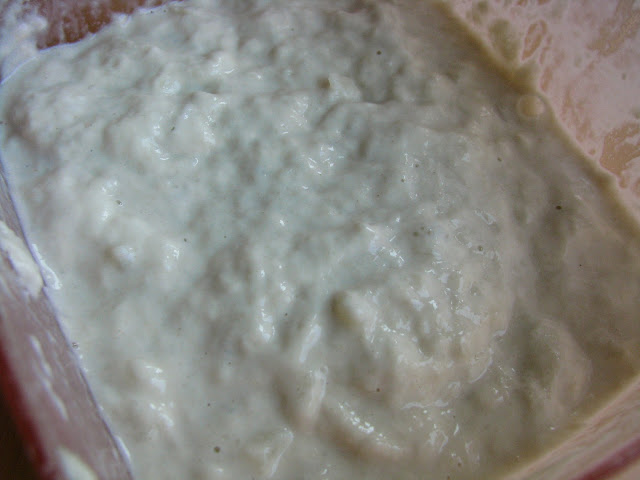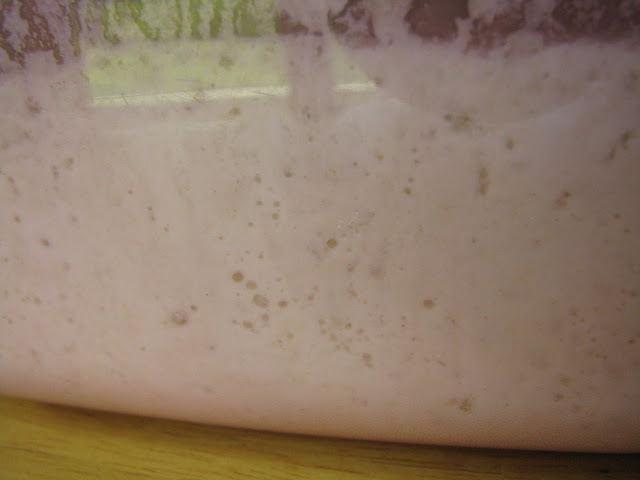Current Theme Song (aka what's playing on my ipod right now): Library of Congress by Trevor Rabin [National Treasure soundtrack].
Are you ready? It's recipe time.
If you haven't picked up a copy of For Darkness Shows the Stars (isn't that the most thought-provoking title? Love it!), you really should. It's a great read, and you'll appreciate this recipe a lot more.
Cause guess what you guys? I've done another first. Several actually, with this book recipe.
1. I've never created a book recipe that was "inspired by" and not specifically mentioned in the book.
2. I've never invented a recipe for something I did not at least have a familiar understanding of before.
I told you this recipe was very likely one you've never heard of before (not unless you happen to be Maori). It made for one heck of an adventure during testing since I had no idea if I was getting it right or not!
Before I tell you what it is, let me give you some secret tidbits delving into the world of For Darkness Shows the Stars.
The first thing I picked up on were the stars Elliot mentioned. Scorpius, Pegasus, Phoenix and others. It piqued my interest. These were all stars in the southern hemisphere. That was new to me. I contacted Diana to ask her about it and found out Elliot's island was inspired off of New Zealand, and in fact makes several subtle allusions to her (Elliot's) Maori heritage.
Ideas started to sprout in my mind. Wheat plays an important part of the story (I won't tell you what, but it happens in the first chapter), as does the sea. Because of their fear of technology, they have been very isolated to their close group of islands for some time. That plus Kai being an explorer made the sea a strong and natural choice to blend together, since it was also very representative of Elliot and Kai themselves. So sea... Salt. It was obvious. Wheat and salt...
And because of their aversion to technology, I wanted this to be a very traditional recipe. To tie in even more, I thought it would be freakishly cool if I could find a traditional Maori recipe for what else but bread? :) And there I found Rewena Paroa.
Now you might be stopping here going "Wait Heather! You tricked me! Bread is EVERYWHERE. Of course you know how to make it! I will spit on your grave for this." But what makes this bread different is how it is made. Instead of yeast (they didn't have it back then) they used fermented potatoes as a levener to make the bread rise.
*pauses*
Yes, we are using spoiled, gas-passing potatoes to make bread.
Stop staring at me like that.
It's good. (And if you think about it, it is genius of the Maori).
This is a way of making bread rise I've never heard of before. And neither has just about anyone in North America, apparently. Trust me, I checked out every fancy-pants artisan bread baking book in my library system (we have a very big library). The idea behind it was there, but not using potatoes specifically as a levener. It gives the bread a tangy, almost sour dough-like flavor. It's delicious. Ready to get started? :)
First step. Plan three days in advance. This honestly was the hardest part because I had to think far enough ahead of when I wanted bread to start the rewena. But I'm getting ahead of myself. Let's get the ingredient list first.
Rewena
1 medium-large potato, cut into cubes
1 C. Water
1 tsp. Honey
2 C. Flour
Pour the water into small pot and add cubed potato bits. They should be covered by the water, but not by too much. If not, add a little more (more is better than less in this case). Boil until soft. DO NOT ADD SALT. This will kill all of the little buggies you are trying so hard to develop. :)
After they are tender when stabbed with a fork, turn off the heat and let the water cool down until it is luke warm. It should not take too long with this small amount of water. Once you can stick your finger in it without wanting to yank it out but feels comfortable instead, then you should be ready.
Take a potato masher, or fork, or any other utinsel of doom you desire to make this as smooth a mixture as possible.
Add the flour to a container (a clear on here is good. That way you can see when bubbles start to form). You want this mixture to be able to breathe, but you also want it covered (covered = more warm. Warm is your friend. Because it fosters new friends). :) That means either loose plastic wrap/aluminum/wax paper-(with rubber band) or one that has a lid placed loosely over it. Mine had a hole in the top. ^_^
Pour in the potato mixture. Stir in the honey, and cover with a lid.
Set in a warm place (I put mine in the window sill) for about three days. Give or take. This is up to your buggies.
Every day, stir in one tsp of sugar or 1/2 C unsalted water (alternate between the days). This feeds them.
(on a water day)
I added water to the original pot, scraping the potato goo off the sides, and poured it into a separate bowl and left it on the counter, using that whenever I needed. If it developed more buggies to help the Rewena along, all the better. Any bad stuff would be cooked out in the oven, so I wasn't worried.
Then it starts to do cool stuff.
Yay! Little bubbles! Wait for it...
Bubble bubble, toil and trouble! Lots of little bubbles. And some bigger ones. Oh yeah.
NOW we're talking!
After you begin to see bubbles popping up all across the mixture and it is looking sticky yet liquidy, you are pretty darn close. Also, when you smell it, it should have a tangy odor to it, but not unpleasant. Almost like bread dough or sour dough, but a little different. My first time round it definitely did not smell like that. It should be a pleasant but slightly unusual, yet smells like something you would want to eat eventually.
The more bubbles the better. Especially good if you can see it all through the mixture.
If you can get more than this, even better.
Next step. The BREAD.
Rewena Paroa
4 C. Flour
2 tsp. Salt
1/4 C. Sugar
1 tsp Baking Soda
1 Tbs Olive Oil
1 Tbs Fresh Rosemary (fresh is worth it)
Put flour, sugar and salt into a large bowl. Stir together. Make a well inside the bowl for the Rewena.
Pour in the Rewena mixture. Sprinkle the baking soda on top.
Add the oil and rosemary. Mix together.
Hello, little potato piece! My, don't you look dashing! :)
Knead. Lightly if you want a fluffier loaf, more heavily if you want a denser one (you will be making gluten the more you knead it).
Set in a warm place for it to double. Two things I discovered in this process. Leaving it overnight does a fantastic job. But if you are pressed for time, sticking an electric hot pad underneath it does a good job of it as well (cover the top with a warm, damp cloth either way). Just remember to turn the hot pad back on after the automatic shut off. :)
After forming into a whatever shape you want your bread to take, sprinkle on top with sea salt to taste. (You were wondering when I was going to be adding the salt part, weren't you?) ;)
Bake at 350 degrees Fahrenheit until golden brown, roughly 30-40 minutes depending on the oven. It should sound hollow when rapped.
Eat warm or cool. Bon appetite!
*of a note. Every Rewena Paroa recipe I found (all three of them), it was straight up potato and bread. The rosemary and olive oil were my additions. I liked the flavor they added, and I figured after a post apocalyptic event and hundreds of years in the future, the recipe might have changed a little bit. :) I hope you enjoyed this one as much as I did!

































3 comments:
Yummy and unexpected! :)
That actually looks really good. I was worried at first. thanks for the recipe!
YUM!
Fabulous!
BTW I saw this and immediately thought of you: http://www.librarything.com/blogs/librarything/2012/08/book-spine-poetry-contest/
Post a Comment